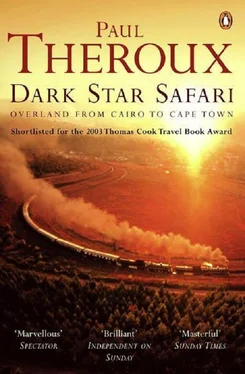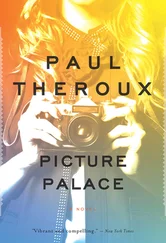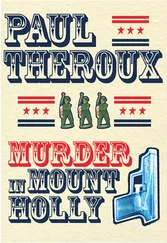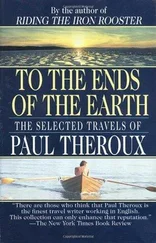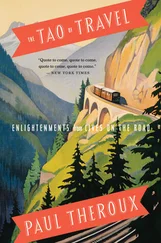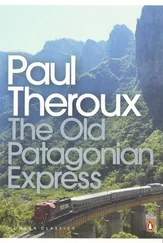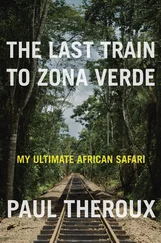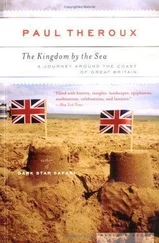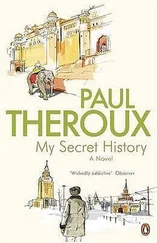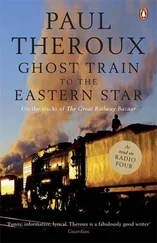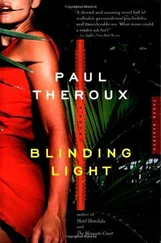I had come here from Cairo in a sleeper on the night train. The taxi driver had asked for fifty Egyptian pounds (about $12). I offered him thirty, assuming he would negotiate as all the others had done, but instead he became peevish and indignant and lapsed into a lofty silence, no haggling at all. At the station, which was very crowded with commuters and cars, he became ridiculously attentive, he bowed to me, he insisted on carrying my bag, he parted the crowd, he found the right platform, the Aswan train, even the section of track where the sleeper would stop. So I handed him fifty for the extra attention he had given me. He scrupulously fished in his purse and gave me twenty pounds in change and thanked me in a sneering way. I tried to hand the money back to him. He touched his heart, waving away the tip. Wounded feelings had turned him into a paragon of virtue.
Yet I had been so touched by the trouble he had taken, and his elaborate courtesies that I persisted, and it became a charade, face-saving on both our parts, as I pursued him down the high road, so to speak, insisting he accept the tip. At last I uttered the right formula, Ashani ana (‘For my sake’), and begged him to accept, and he took it, holding the money like a trifle, his favor to me: a very clever man and a lesson to me in Egyptian pride.
Rameses I Station, usually called Cairo Railway Station, is a century old, like the railway system itself, which stretches from Alexandria on the shores of the Mediterranean, to Aswan on the Upper Nile, at the northern edge of Lake Nasser — the border of Sudan on the south side. The design of the station is of interest, and it has been said that it represents the epitome of nineteenth-century Egyptian architects’ desire to combine classical and Islamic building styles, in response to Khedive Ismail’s plan to create a ‘European Cairo’ — Moorish meets modern.
Kings, queens, princes, heads of state, and generals have arrived and departed here. One of Naguib Mahfouz’s earliest heroes, the ultranationalist anti-British rabble rouser, Saad Zaghlul, escaped an assassination attempt at Cairo Station on his return from one of his numerous exiles, in 1924. Given Egypt’s history of dramatic arrivals and departures the railway station figures as a focal point and a scene of many riotous send-offs and welcomes.
The best story about Cairo Railway Station, told to me by a man who witnessed it unfold, does not concern a luminary but rather a person delayed in the third class ticket line. When this fussed and furious man at last got to the window he expressed his exasperation to the clerk, saying, ‘Do you know who I am?’
The clerk looked him up and down and, without missing a beat, said, ‘In that shabby suit, with a watermelon under your arm, and a Third Class ticket to El Minya, who could you possibly be?’
To leave the enormous sprawling dust-blown city of gridlock and gritty buildings in the sleeper to Aswan was bliss. It was quarter to eight on a chilly night. I sat down in my inexpensive First Class compartment, listened to the departure whistles, and soon we were rolling through Cairo. Within minutes we were at Gizeh — the ruins overwhelmed by the traffic and the bright lights, the tenements and bazaar; and in less than half an hour we were in open country, little settlements of square mud-block houses, fluorescent lights reflected in the canal beside the track, the blackness of the countryside at night, a mosque with a lighted minaret, now and then a solitary car or truck, and on one remote road about twenty men in white robes going home after prayers. In Cairo they would have been unremarkable, just part of the mob; here they looked magical, their robes seeming much whiter on the nighttime road, their procession much spookier for its orderliness, like a troop of sorcerers.
I went into the corridor and opened the train window to see the robed men better, and there I was joined by Walter Frakes from St Louis, an enormous man with a long mild face, and a smooth bag-like chin, who found his compartment small, ‘but what’s the use of fussing?’ He was traveling with his wife, Marylou, and another couple, the Norrises, Lenny and Marge, also from St Louis. They too were heading to Aswan to meet a boat and take a river cruise.
‘And if I don’t get a decent bed on that ship I’m going to be a wreck,’ Walter Frakes said. He was a very gentle man in spite of his size, which I took to be close to 300 pounds; and he was kindly and generally uncomplaining. All he said in the morning was: ‘Didn’t get a wink of sleep. Tried to. Woke up every time the train stopped. Must have stopped a hundred times. Durn.’
I had woken now and then as the train had slowed at crossings, or at the larger stations. There were sometimes flaring lights, barking dogs, otherwise the silence and the darkness of the Nile Valley, and a great emptiness: the vast and starry sky of the Egyptian desert, and that road south that ran alongside the train, the only road south, as Mr Tilohun had said, the road to Johannesburg.
In the bright early morning I saw a sign saying, Kom-Ombo — 8 km , indicating the direction to its lovely temple with a dual dedication, to Horus, the hawk-headed god, and Sobek, the croc-skulled deity. Another sign said, Abu Simbel Macaroni , and depicted its glutinous product in a red bowl.
Date palms in clusters, orange trees, low boxy houses, donkey carts piled high with tomatoes, the occasional camel, the men in white gowns and skullcaps, the boys walking to the fields carrying farm implements, and the wide slow river and the flat bright land shimmering under the blue sky. This was new Egypt but it was also old Egypt, for I had seen many of these images in the Cairo Museum — the adzes and mattocks the boys carried I had seen looking much the same, and the same heavy browed bullocks I had seen hammered in gold or carved in stone I saw browsing by the river; the same dogs with upright tails and big ears, the same narrow cats, and had I seen a snake or a croc they would have had counterparts in gold on a chariot or else mummified and moldering in a museum case.
Some of those cap and gowned men were seated in groups eating pieces of bread loaves the same shape I had seen in the museum removed intact, solid and stale, from ancient tombs; the same fava beans that had been disinterred from crypts were being gobbled up from wagons of men selling foul , the stewed beans that are still an Egyptian staple. The same-shaped ewers and pitchers and bowls I had seen as old artifacts were visible here in the hands of women faffing around at the kitchen doors of their huts.
The Nile was near, about 300 yards from bank to bank, slow moving and light brown, showing clouds on its surface, with green fields on either side, some with marked-out plots and others divided into date plantations, hawks drifting over them on the wind currents, and in the river feluccas with sails — impossible to see these sails and not think of gulls’ wings. And then, as though indicating we were approaching a populous place, there was a succession of cemeteries, great long slopes of sun-baked graves, and the grave markers, small rectangles set into the stony ground, with raised edges, like a whole hillside of truckle beds where the dead people lay. Beyond the next hill was Aswan.
This easy train trip south from Cairo to Aswan had rushed me 500 miles into Africa, almost to the far edge of Egypt, to the shore of the lake — Lake Nasser — that borders the Sudan. With a visa I could have got a ferry down the lake and nipped over the border: a boat left the High Dam every week, bringing workers to Wadi Halfa, in Nubia. But I had no visa yet.
Aswan was mainly a bazaar and a destination for tourists heading for the ruins. But it was a good-natured bazaar, divided in half — local people buying melons and grapes and fava beans and coffee and spices, and tourists haggling over plaster images of the pyramids and the Sphinx, and Nefertiti, brassware depicting King Tut’s shiny face and colorful carpets, walking sticks and T-shirts. Egyptian tourist kitsch is to my mind the ugliest in the world, and some of it ambitious too: expensive malachite funerary urns, scale-model sarcophagi complete with model mummy, stone carved cats and hippos.
Читать дальше
